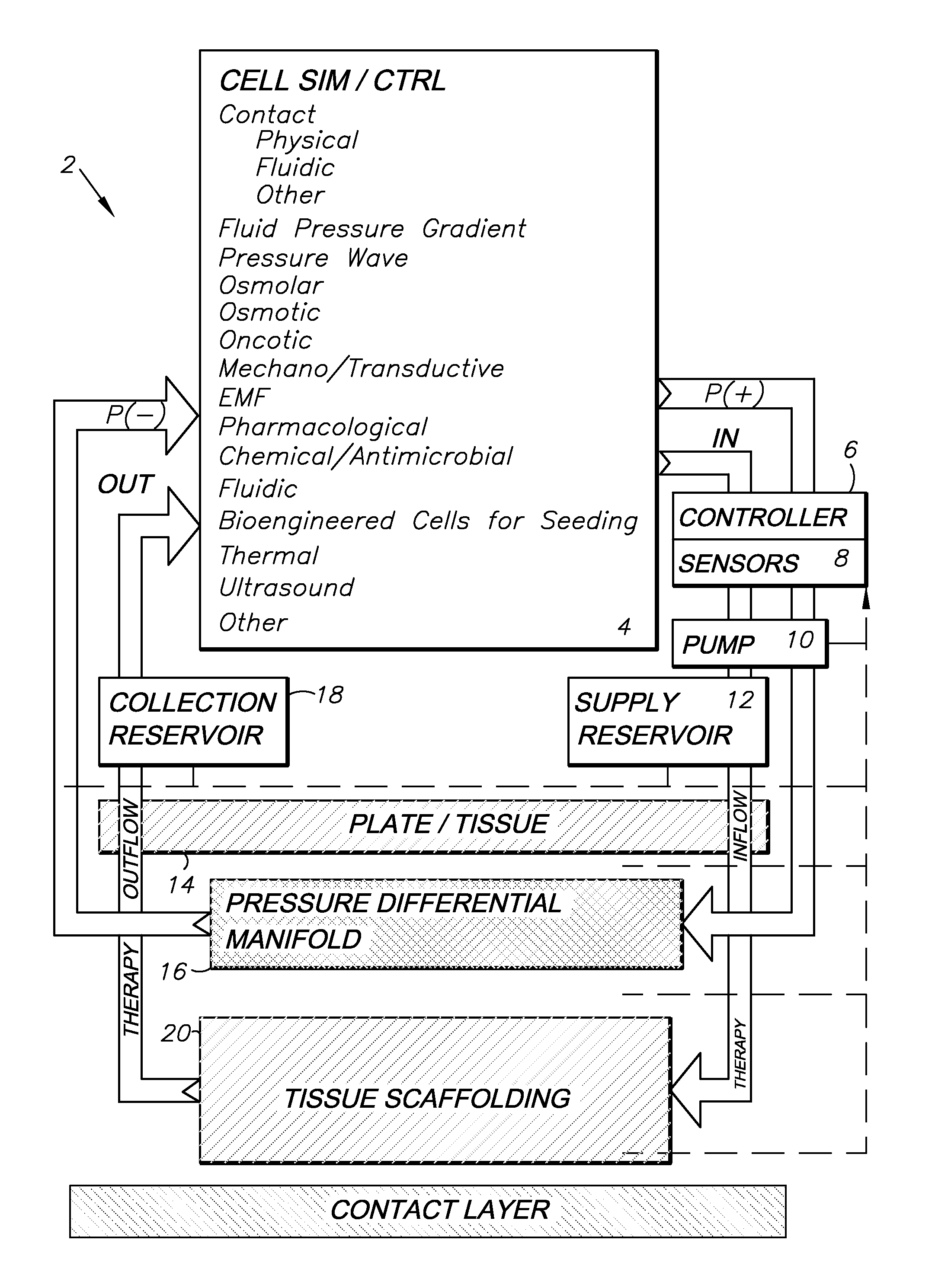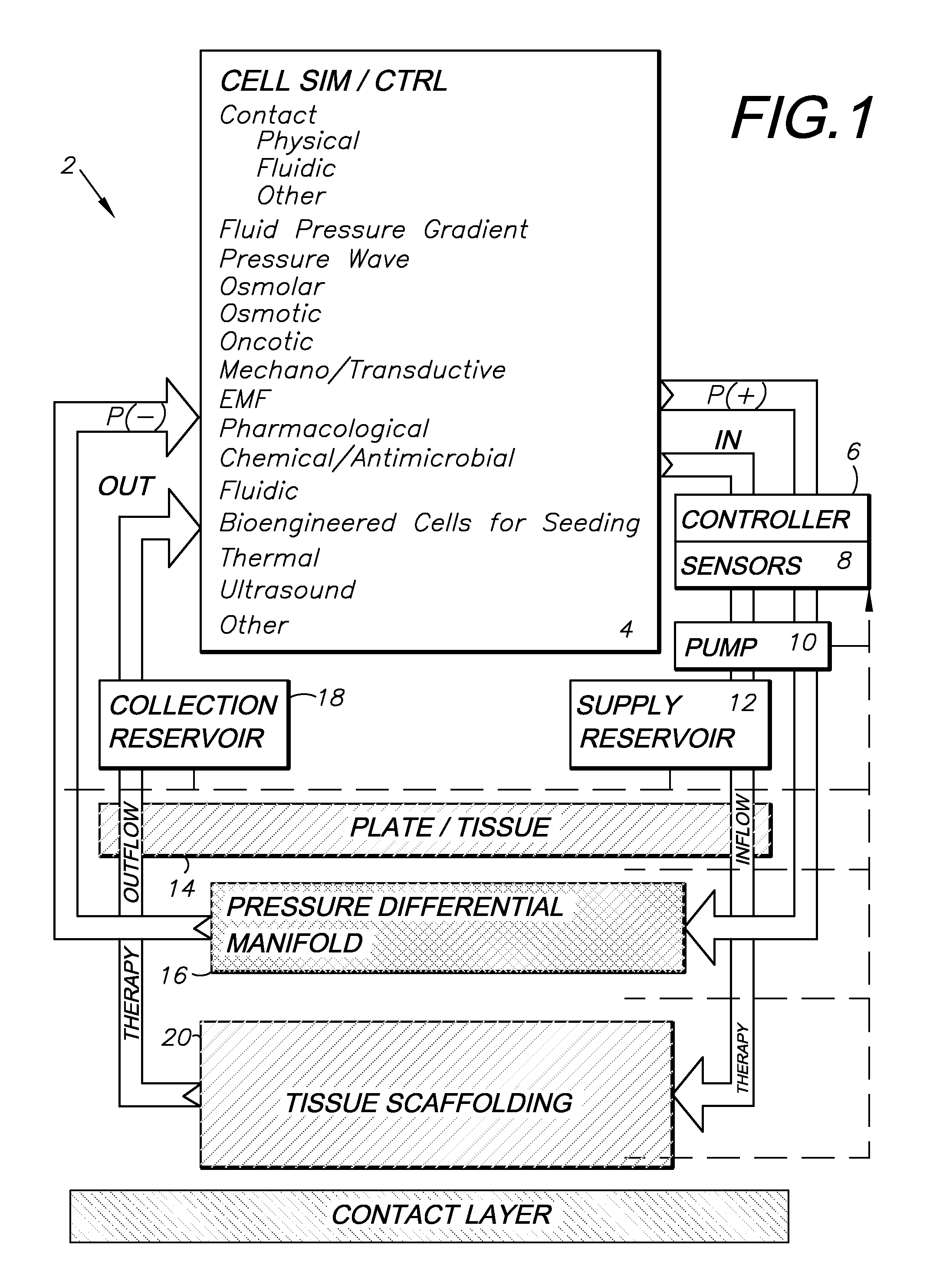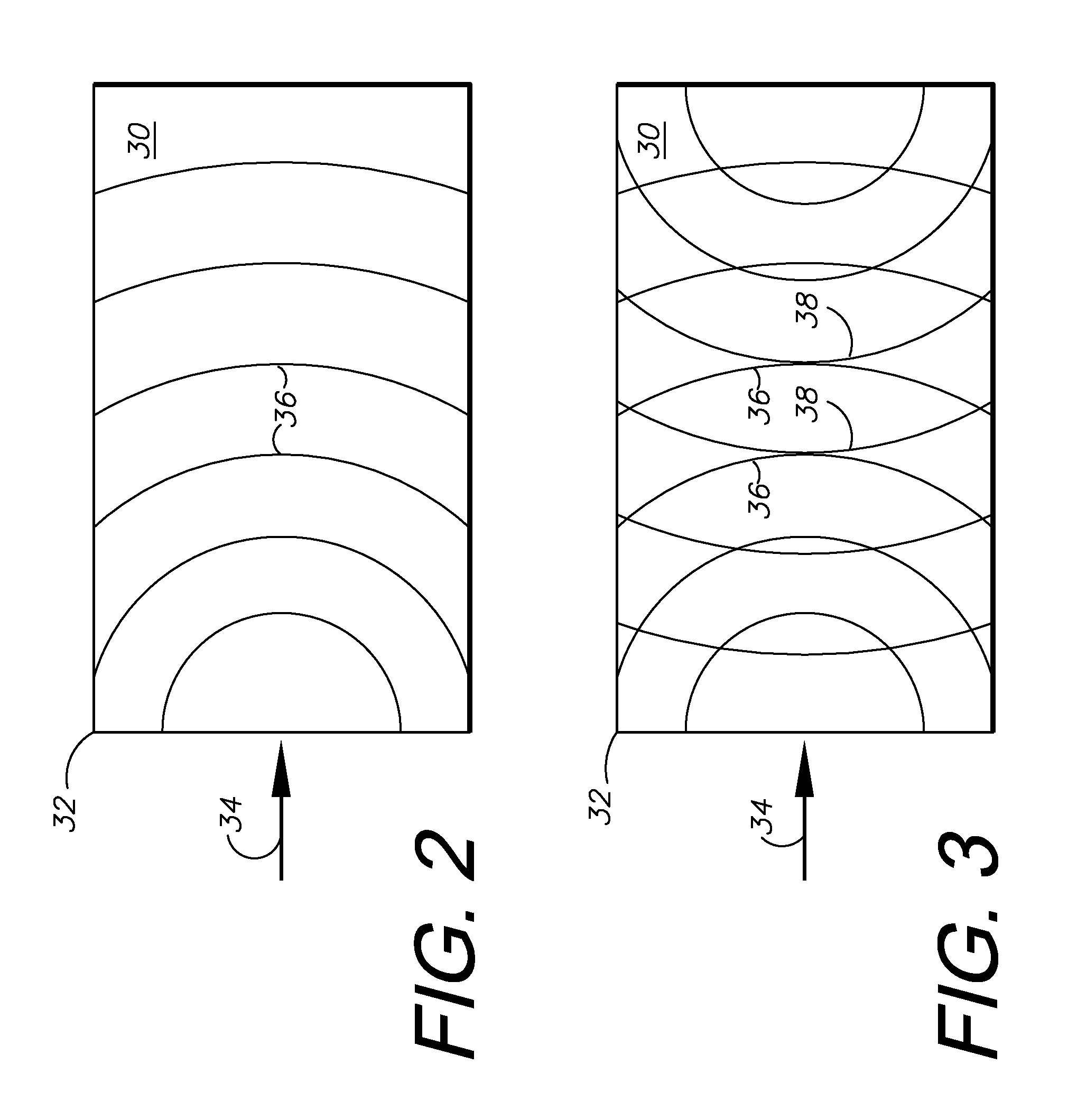Simulation and control system and method using contact, pressure waves and factor controls for cell regeneration, tissue closure and related applications
a control system and cell technology, applied in the field of simulation and control system and method using contact, pressure waves and factor control for cell regeneration, tissue closure and related applications, can solve the problems of inability to fully realize the effect of cell regeneration
- Summary
- Abstract
- Description
- Claims
- Application Information
AI Technical Summary
Benefits of technology
Problems solved by technology
Method used
Image
Examples
embodiment a
IV. Embodiment A
[0046]This represents the least constrained model. The gel medium is rendered by utilizing synthetic or engineered dynamic gel. This provides the opportunity to cut the material to insert sensors and to shape the material by warming and pouring into containers that produce the desired shape and size for testing. The gel can then be removed from the shaping container and left with just the dependent surface in contact with the supporting structure or the gel can be supported in planned percentages of circumference by netting or slinging.
[0047]The internal liquid phase can be simulated by elastic tubing (e.g. Penrose Drain latex tubing in various widths) extended beyond the surface of the gel allowing measured addition, pressurization, pulsation and removal from an external access point to the tubing. This can be placed, as can the sensors, by cutting the gel at the desired point(s) or by pouring the gel to that point, allowing some cooling, laying on of the tubing / sen...
embodiment b
V. Embodiment B
[0051]This is the most constrained model. Of course, all permutations between A and B are feasible. This model consists of an appropriate rigid material, like acrylic or some other plastic or metal (even the container that the ballistic gel is melted in), that forms the sides of this model. For the example of this embodiment we choose a square shape and rigidly supply 5 of the 6 walls of the cube. The gel is prepared, whole, cut or layered as described above, and poured or placed in the container (or the container can be built around the gel). “Through-hull” type fittings are fashioned with the gel flush with the internal or external portion of the walls and the above described tubing, measuring devices and mechanical force impounder are fitted through them. For example, the lines of the sensors can be run up the walls and over the top of the container or lead out through holes in the wall. A mechanical force piston can be fit in such a hole and separated from the gel...
embodiment c
VI. Embodiment C
[0053]This arrangement of components and sensors is like the rigid box in B, however the placement of tubing and sensors is exchanged. The (central) embedded (can either start collapsed or the anticipated average size be cored out of the gel) elastic tubing (utilizing as part of the testing various degrees of elasticity and rigidity) can be continuous throughout the length of the box, containing liquid in the tubing all the way throughout as it runs from input through output ports, ending at valves or sensors or pumps on the exterior of the box. Or it can end blindly in a blunt end within the gel inside the experimental box utilizing only a single port for administering or removing the liquid it contains and for passing the sensors. Instead of sensors in the gel as in Embodiment B, the sensors, e.g., a string of micro manometers in a catheter with the sensors placed every few centimeters or an elongated format for the Tecscan® force plate can be inserted inside the t...
PUM
 Login to View More
Login to View More Abstract
Description
Claims
Application Information
 Login to View More
Login to View More - R&D
- Intellectual Property
- Life Sciences
- Materials
- Tech Scout
- Unparalleled Data Quality
- Higher Quality Content
- 60% Fewer Hallucinations
Browse by: Latest US Patents, China's latest patents, Technical Efficacy Thesaurus, Application Domain, Technology Topic, Popular Technical Reports.
© 2025 PatSnap. All rights reserved.Legal|Privacy policy|Modern Slavery Act Transparency Statement|Sitemap|About US| Contact US: help@patsnap.com



